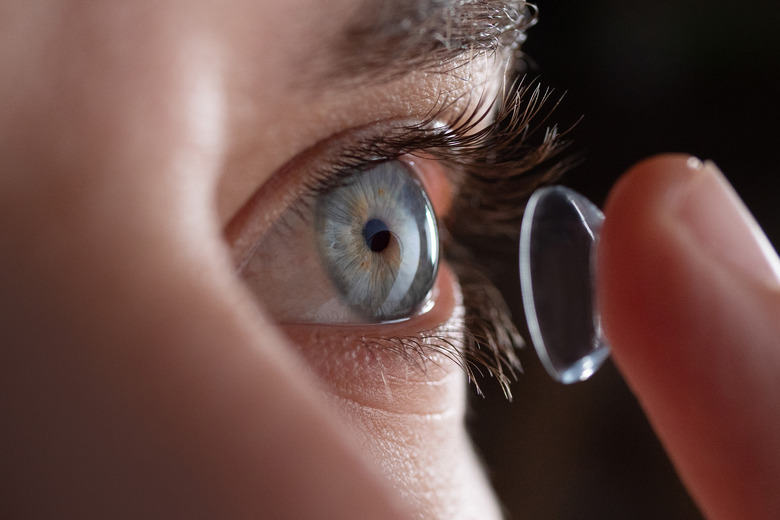Researchers Made Batteries Powered By Tears For Smart Contact Lenses
One of the coolest things we've seen in movies like the Mission: Impossible series is smart contact lenses that display all sorts of cool information right in the main character's field of view. The problem with such a device is that it needs energy to produce the augmented reality (AR) features. Conventional batteries won't work for obvious reasons. Plus, you can't exactly put a charging port on a contact lens.
Movies like Tom Cruise's Mission: Impossible don't actually explain how their futuristic smart contact lenses work. They're just movies. But they've inspired one researcher to figure out a way to create safe, ultra-thin batteries for smart contact lenses.
The solution is a special battery pack that's barely thicker than a strand of hair, so it would fit in a contact lens. Incredibly, the battery can be charged by the sugar in your tears. The more moisture in your eyes, the better the battery life. The tech might lead not only to the creation of smart contact lenses, but also to lenses that can measure sugar levels in people with diabetes.
Nanyang Technological University scientist Lee Seok Woo told CNBC that a scene from a Mission: Impossible movie made him think about smart contact lenses. In the fourth film of the series, an agent uses lenses with sophisticated capabilities, such as facial recognition and eye tracking. To get there, you need energy.
Lee and his team recognized that smart contact lenses will need batteries that are safe and comfortable to wear. Contact lenses are just 0.5 mm thin, so the batteries have to be even thinner. Lee devised a pack that measures about 0.2 mm, or about twice the thickness of human hair.
The researchers then devised a way to power the battery that's safe for the wearer. They looked at a biocompatible saline solution alternative to the lithium-ion batteries you'd find in all sorts of devices, such as smartphones.
The battery can be recharged using a regular wired method or a chemical method. The latter consists of a chemical reaction between the glucose that coats the battery and the sodium and chloride ions in the saline solution. Eight hours of that will give you an 80% charge on the smart lenses, which is good for a couple of hours of use. That's not the best-case scenario for spies like Agent Ethan Hunt.
But there's another way to recharge the smart contact lenses. You just put them on and let the human body do its thing. Tears also contain glucose, so the researchers figured out that you can recharge the battery of the smart contact lenses by crying while you wear them.
By that, I mean you'd have to cry a little. And by a little, I mean as often as you can. The more you cry, the more battery life you'll have. Explaining your crying to people around you is another matter.
The researchers seem to actually have a working prototype already. It can charge via both methods, but that's where they're dealing with a problem that needs fixing. The battery can produce a voltage of 0.3V to 0.6V. That's not high enough to power data storage or internet connectivity. You'd need both of those things for any meaningful AR functionality from a product like smart contact lenses.
While the researchers are already working on improving the battery specs for commercial uses, they've already identified another potential use for the battery. Lee and his team are looking at measuring glucose levels in diabetic patients by reading the sugar level in tears.
Forget all about enhancing Mr. Hunt's spying abilities with AR contact lenses. This invention could be a breakthrough device if it can offer noninvasive sugar monitoring. It's unclear when such a product will be ready for commercial use, but the researchers want to make the battery tech as affordable as possible. Lee told CNBC that each battery would cost only a few dollars.
